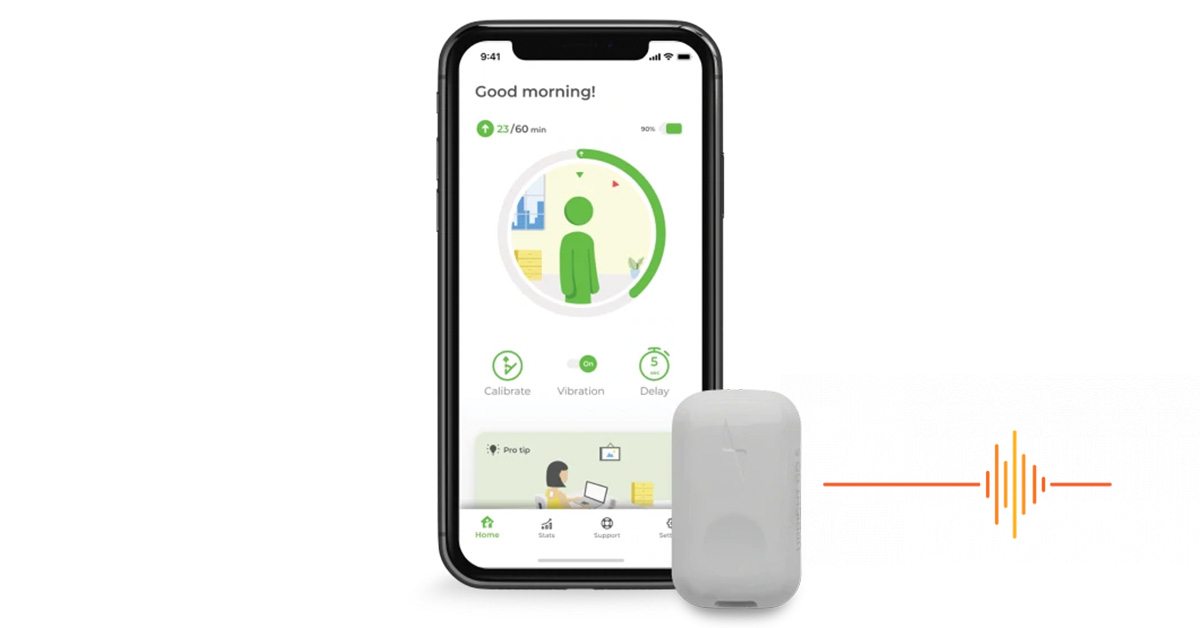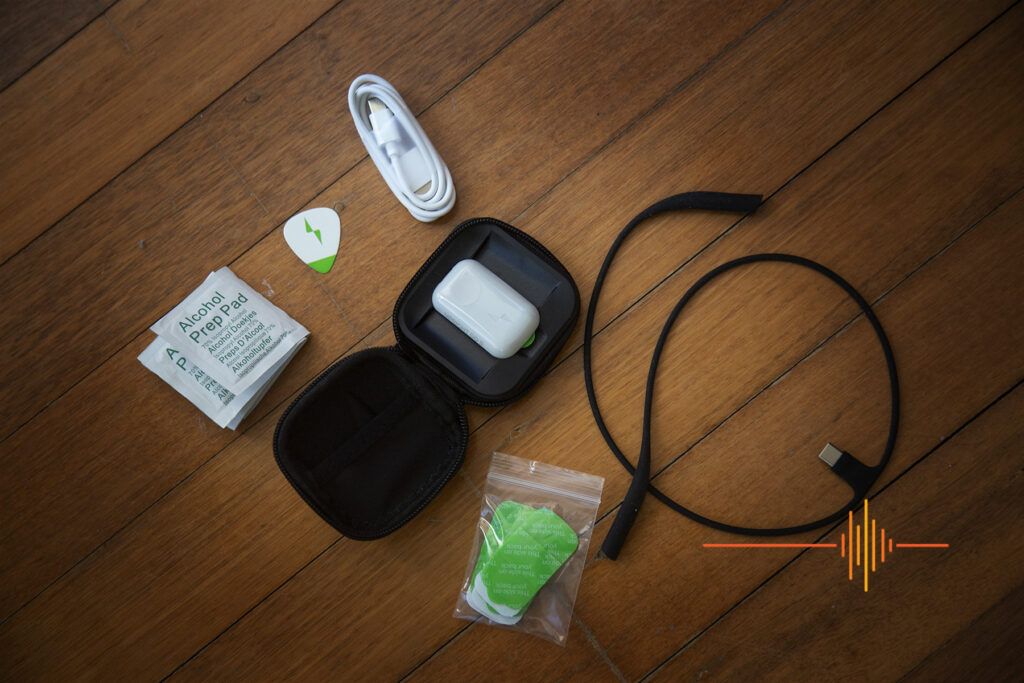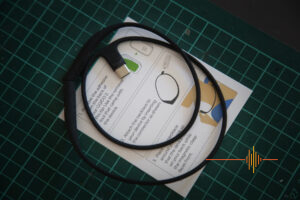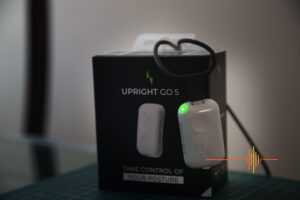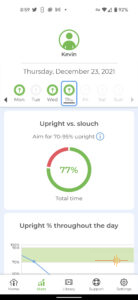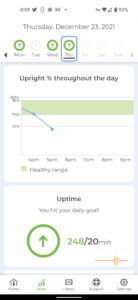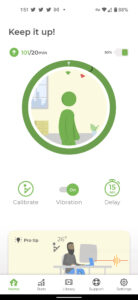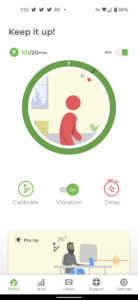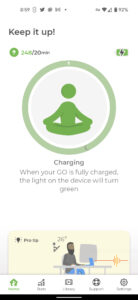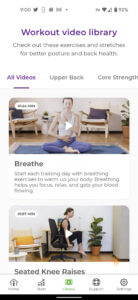How often do you think about your posture? As a parent I am always asking my kids to sit better, trying instil a better sense of posture. On the other hand I really don’t think about my own. At some point a Pilates instructor wondered if I might have some scoliosis. And most of us would probably have sat through OH&S sessions on correct workstation setup. I know my work did an updated on when we all started #WFH.
So when I was approached to review the Upright Go S, my curiosity was piqued. I was part terrified and part curious to see how I would go. My partner always have to remind me not to slouch. My chiro reminds me to get up, stretch, use a vertical mouse, get my workstation set up for me. Well my chiro has bailed interstate, and Anita has gone back to work, so I definitely have less biological reminders to look after myself.
Background
The Upright believe is that back health is central to your overall well being. I am not going to argue that, but certainly I have seen my fair share of people with back pain, and occasionally suffered it myself. The company’s journey began with the CEO Oded Cohen, creating a solution to alleviate his mother’s severe back pain.
There are no magic bullets here, the Upright uses biofeedback and behavioural science to build and reinforce better habits. The idea is to gently remind you when you are in a position that is likely to cause back pain, pushing you to correct your posture.
First Impressions
The Upright Go S is the “starter” edition of the Upright Posture Trainers.
As our Chief Unboxing Officer said, it’s smaller than expected! To be specific, the Upright Go S (and also it’s brethen Upright Go 2) are 48mm tall. The Upright Go S is 25mm wide and about 7mm thick. Roughly two Australian 20 cent pieces touching edges and stacked 2 layers high.
There is a USB-C port (thank god!) on one end and a circular depression on the surface which is a button to turn on the Upright Go S. Same button allows you to toggle off the vibration, effectively turning off the Upright.
The “skin side” of the Upright is easy to find. It is the flat surface with the green tape over the hypoallergenic adhesive.
In the box is the posture trainer (naturally), a travel case to keep it safe when not in use, a USB-C charging cable, a triangular adhesive removal tool, 5 pack of reusable silicone adhesives and alcohol cleaning pads (for your skin).
Setting Up
You will need the Upright app from your smartphone’s store to get going. The app guides you through everything including the pairing process and it is pretty easy. The wizard says it will take about 5 minutes but it didn’t feel like that for me.
The first question asked is, what is your main posture training goal? Is it to improve overall wellbeing? Relieve constant back pain? Relieve occasional sitting discomfort? Look better? Prevent future back issues? Other?
The app WILL ask for location permission on Android. This is a Google permission requirement going back to Android OS 6.0 (Marshmallow). The location permission requirement is to alleviate concerns that Bluetooth beacons can be used to track your location without your permission during a Bluetooth low energy scan, such as the scan required to sync your UPRIGHT GO device. Upright states that location will not be recorded or tracked.
The app will update your Upright Go S to the latest firmware version as part of the initial setup. When that is all done, the app will guide you through the placement.
By default the Upright comes with hypoallergenic adhesives. These are rated for between 3 to 10 uses depending on your skin type. The provided alcohol wipes is for cleaning your back, and you have to wait is fully dry before applying the adhesive.
The Upright is not directional, you can face it up or down regardless, as long as it is as close to vertical as possible along your spine.
The app then takes you through the calibration process, with simple easy to follow pictorial to achieve your upright posture for the calibration process. It is important to note that the calibration process is not a once off. Ideally you should recalibrate the device each time it is placed on your skin for optimal results. This can be initiated by you, or by the app if it detects it is required.
In Use
What surprises me the most is generally how unobtrusive the Upright Go S is. My review unit came with the Necklace which means I do not have to worry about the adhesive part. I just need to turn on the device, throw the necklace on and I am ready to go.
A pro tip here is to make sure that the Upright is not sitting too high on your back, somewhere lower down from the neck on the upper part between your shoulder blades is good. Otherwise you can get a lot of false positives.
The app will find the device automatically and there are really only three options to configure. The first is Calibrate which we have already done. There is an auto calibrate feature which is in beta at the moment.
The second is vibration. You can turn it off when you are not actively using it (and the unit is still stuck to your skin). There are three levels of vibration: gentle, medium and strong. The default setting is on medium and it feels ok for me.
Lastly is the delay between detecting your posture being out of optimal range and the Upright giving you a gentle nudge to correct. The delay can be set to 5 seconds, 15 seconds, 30 seconds or 1 minute. The default is 15 seconds.
What is readily visible on the app, is your posture in real time in relation to where it decides you are out of alignment. Your current position has a green arrow on a circle. The “boundary” of your posture limit is noted by a red triangle. When everything is hunky dory, the little figure depicting you is green. But once you slouch into the out of alignment region, the little man turns red. The timer then kicks in counting down to the value you have set before the Upright will vibrate twice to remind you to straighten your posture. If the Upright does not detect a change in posture back into the green zone, it will vibrate again (and again).
Overall the Upright Go S is very discreet (unless you are in a really quiet room). I can easily forget that it is even there until it (gently) kicks me to remind me that I need to correct my posture.
The aim of the Upright isn’t to bully you into a healthier state, it is to be there to remind you when you slip so that you can build good habits. Through repetition and consistency, you are building muscle memory to maintain a better posture over a period of time. The charts on the Upright website shows time intervals where you see will improvements, generally some changes after the first month, with gradual consistent improvements until the 7-9 month mark. This is a long term project to improve yourself.
Other Features
The app does more than just showing your posture position. It keeps track of your progress so you can see just how you are tracking each day.
There is a library of exercise videos to focus on upper back, core strength and lower body. Each video guides you through a focussed exercise for improving your back health.
As mentioned before, I was provided with the Upright Necklace. The Necklace is made from high grade silicone with a magnetic fastener on the front side. Rather than reinventing the wheel with some special proprietary holder for the Upright devices, the Necklace has a USB-C connection for securing the Upright. Keeping it simple.
For those who don’t like the idea of the adhesive on their skin, or prefer the convenience of being able to quickly put on or take off the Upright, this is perfect. It is surprisingly stylish, and have the option of either black or white to go with your wardrobe choices.
Conclusions
This is one of those things where you wonder why you never thought of it. The simplicity of the idea and implementation is what makes it brilliant. There is no need for professional fittings, or specific accurate placements like a TENS machine. The Upright Go S has a good margin for error when put in use, as long as the device is somewhat vertical. The Necklace is a brilliant idea that removes the dependency on the adhesive and all the potential issues there. The app does not pretend to be anything it is not, but the real time feedback on your posture is a nice touch that allows me to see exactly what I am doing.
The Upright Go S has a RRP of $79.95, and the Necklace is RRP of $29.95. When bought together there is a 8% discount bringing the bundle down to $115. That is roughly, three visits to a chiropractor after health insurance rebate? Think of it as an insurance policy in between chiropractic sessions, one that will keep you accountable to change for the better. When you look at it in that context, it is not a bad new year’s resolution to make isn’t it?
Edit: Upright is offering additional discounts until 23 January 2022 on the Upright Go S for $59.00 ($20 off), or the Go S Pro Bundle for $99 ($25.85 off).
Specifications
Smart movement sensor: 1
Battery life: 2.5 days
Offline activity: 7 days offline training
Hypoallergenic adhesives: 5 with device purchase
Travel case: soft case
Advanced feedback customisation: 3 plans
Size: 48mm high
OS: iOS and Android


